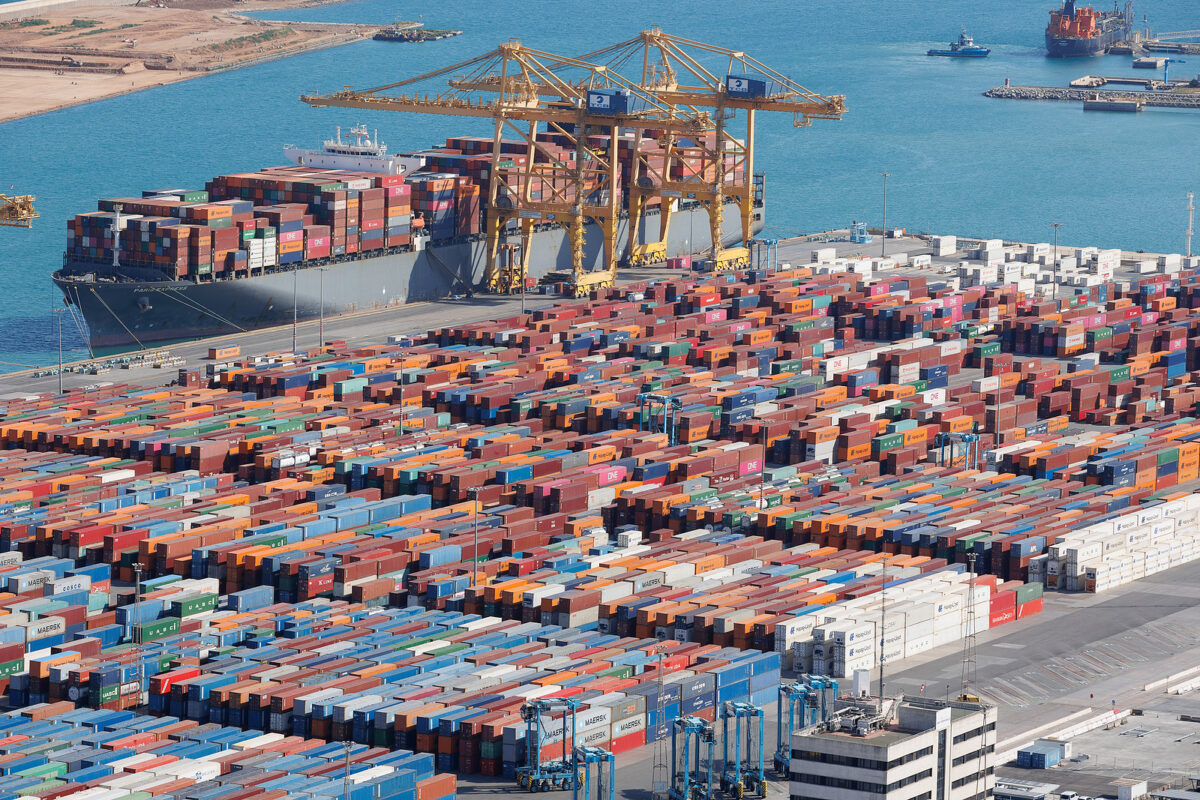It was news that slipped out just as Georgia was reeling from the country’s parliament overturning a presidential veto of a so-called ‘Russian’ law designed to muzzle independent NGOs. Tbilisi’s bid to build a deep-water port on its Black Sea coast, at the small town of Anaklia, is back on the agenda. This time with help from China, although the Georgian government will hold a 51 per cent stake in the port.
Georgia’s Minister of Economy and Sustainable Development Levan Davitashvili made the announcement at a press conference on May 29, where he said the government had received bids from a Swiss-Luxembourg consortium and a joint offer from China Communications Construction Company and the Singapore-based China Harbour Investment.
“The application is complete, the relevant bank guarantees have been presented,” said Davitashvili. “In a few days, we will have clarifications, after which the Chinese consortium will be announced as the winner.”
He added that China Road and Bridge Corporation and Qingdao Port International will serve as subcontractors to build the port.
A project beset by problems
Anaklia Deep Sea Port, Georgia’s largest ever infrastructure project, was originally proposed by former president Mikheil Saakashvili more than a decade ago as a Georgia-US joint venture. The first phase of the port was set to be fully operational by December 2020.
Since then, however, the project—initially set to cost 2.5 billion US dollars, but now thought to require considerably more investment—has been beset by problems.
In January 2020, the Georgian government canceled a preexisting contract with the Anaklia Development Consortium (ADC), which had been tasked with building what would be the country’s first deep-water port.
According to the then Minister of Infrastructure and Regional Development Maia Tskitishvili, the reason behind annulling the agreement was that the consortium had not fulfilled its obligations to attract investment of 400 million US dollars.
However, Mamuka Khazaradze, a former chairman of the ADC supervisory board and a founder of an opposition party, Lelo, said at the time that then PM Giorgi Gakharia and Bidzina Ivanishvili, Georgia’s richest person and the founder of the ruling Georgian Dream party, had been “personally involved” in disrupting the project.
Disputes between the consortium and the Georgian government had intensified in 2019 after Conti Group International, a major US investor, decided to pull out from the project. While both Gakharia government and that of his predecessor Mamuka Bakhtadze had came out in support of the project several times, the ADC accused the government of sabotage aimed at halting the project, when it failed to issue state guarantees for the 400 million US dollars loan the consortium needed to secure.
A dangerous development
Since then, the Georgian government has tried to find a new developer for Anaklia, but without success—until last week.
Georgia’s opposition have been quick to condemn the selection China to complete the project. According to Marika Mikiashvili of Georgia’s opposition Droa party, “It’s indicative that the Chinese-Singaporean company was chosen just a day after the Russian law was adopted. It’s all part of the bigger picture. Coupling it with the offshore law as well, which exempts assets brought into Georgia from offshore jurisdictions from all duties and taxes, and you have a safe haven for all Russian money and beyond, any illicit business.”
As with the law that will make life almost impossible for the country’s NGOs, the Georgian government appears to be in no mood to back down, however.
Irakli Kobakhidze, Georgia’s prime minister, defended the decision stating that, “this is one of the largest Chinese state companies, which has great experience, including in the implementation of this type of projects. Winning this tender ensures that the Anaklia project will be implemented at the highest level.”
According to RFE, however, while the selected Chinese firms have extensive global experience, they’ve also courted international controversy and scandal, from fraud accusations in the Philippines to bribery in Bangladesh. Two companies in the consortium have also been banned from participating in World Bank-financed construction projects.
‘Handing over the port to China’
That there is a need for Anaklia is not in doubt. As supply chains reconfigure to exclude Russia in the aftermath of its invasion of Ukraine, interest in the so-called Middle Corridor— also called TITR (Trans-Caspian International Transport Route), a trade route from Southeast Asia and China to Europe via Kazakhstan, the Caspian Sea, Azerbaijan, Georgia and Turkey—has surged.
Indeed, the trade route’s current capacity has struggled to keep up with the surge in demand.
Georgia’s government is hoping take advantage of its geographic location—the only South Caucasus country with a Black Sea coast—and renewed global interest in the Middle Corridor to attract investment and boost trade.
“Anaklia could be a key aspect of Georgia’s strategic connectivity with the West, as well as a platform to ensure that the Eastern part of the Black Sea is also under the Western security architecture and the area is denied to Russia,” adds Marika Mikiashvili.
“However, Georgian Dream is…essentially handing over the port to China. Just 36 kilometres away from Anaklia, at Ochamchire in Russian-occupied Abkhazia, Russia plans on constructing a naval base as it cannot operate in Crimea or even its own sovereign ports any longer. We will thus have a Russo-Chinese tandem in the Eastern Black Sea, further undermining Georgia’s sovereignty and its reputation as a secure business environment for Western companies as well.
“Anaklia Deep Sea Port would also be an important infrastructure in the entire Middle Corridor, and the whole point of the Middle Corridor is to reduce the interests of Russia and regimes in close relationships with Moscow.”







